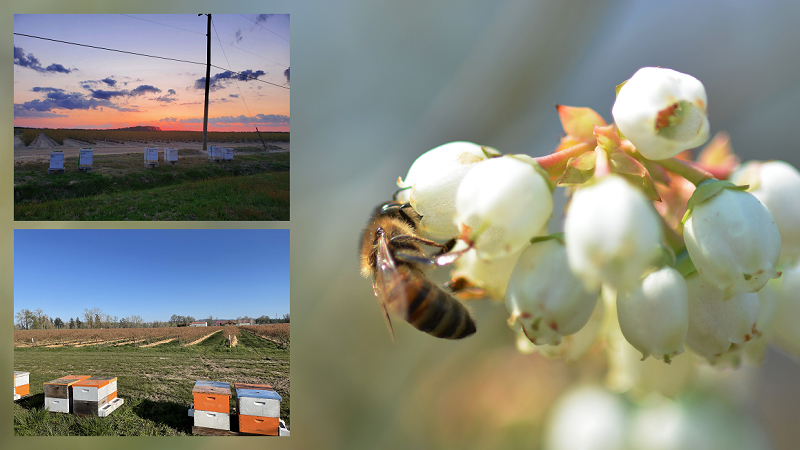Insect Monitoring Project Using Pheromone Traps
In order to demonstrate the effectiveness of pheromone traps as an IPM tool and to determine the relative pest pressures across the state, the Alabama Cooperative Extension System (ACES) established a network of pheromone traps on commercial farms in cooperation with a dozen crop producers who planted a mixture of field and vegetables crops. The project is funded by USDA Extension IPM Coordination and the Southeastern Peanut Research Initiative grants for maintaining an active IPM campaign for producers.
Initial pheromone trap training to producers was provided by the Regional Extension Agents (REAs); crop producers who signed up to receive weekly pest alerts were continuously provided feedback about insect activity. In the pilot project, a series of pheromone traps were installed in 14 counties of Alabama to detect insect pests from May to October. In select fields, pheromone trapping was conducted in conjunction with actual crop scouting to determine injury (data not shown).
Pheromone traps were serviced every two weeks and results were shared with producers via the weekly newsletter called “AU Insect Pest Advisory,” information factsheets (on ACES website), news releases, a new IPM hotline (800-446-0375), and an extensive insect monitoring project website (www.aces.edu/go/85). In addition to this website, growers and industry personnel had the option to subscribe to blogs at two entomology websites (www.aces.edu/go/87 and www.aces.edu/go/88) for automatically receiving email alerts.
In 2010, the newsletter has been renamed “The IPM Communicator” with multi-institutional collaborations. Producers in Alabama can contact a Regional Extension Agent for more information about the IPM projects.
Research Findings From 2009
As expected, the average trap catches for some pest species varied greatly between southern and the northern regions of the state, indicating differences in pest pressures and peak activities. Mixed populations of CEW and TBW are present throughout Alabama; growers can correctly identify mixed populations using pheromone traps followed by actual canopy search to assess damage. Growers should note that CEW and TBW have variable response to insecticides and so proper identification is critical. Low insect catches in pheromone traps do not mean that the insect is inactive; trap catches are influenced by weather patterns, trap type and placement method, lure quality, and pesticide usage near the sampling area.
Use Of Pheromone Traps
1. Specificity: Insect pheromones cause reaction in the opposite sex of the same species as the releaser, that is, traps containing corn earworm lure will only catch corn earworms in flight. One reason for such specificity is that pheromones consist of specific chemical blends unique to a species.
2. Sensitivity: Pheromone lures are active in small amounts. Male moths can detect pheromone plumes (three-dimensional trail of chemicals) from several miles using their antennae.
3. Simplicity: Pheromone traps and lures are easy to deploy in crop fields and they are easy to service. Observations are simple and may not involve scanning the entire sticky bottom. For some insect species, action thresholds are based on insect density in traps.
4. Safety: Pheromone lures have a small amount of synthetic chemical which makes them practically nontoxic to the users. It is strongly recommended that growers use latex gloves for handling lures to avoid contamination.
Pheromone traps also have some disadvantages. They include:
1. Trap catches do not indicate actual crop damage. Traps cannot be used to estimate actual injury to crops due to the presence of caterpillars or grubs. Traps can only complement actual crop scouting.
2. Use of traps may require training. Correct deployment and servicing of traps may require some training because there are specific handling and timing issues for maximum effectiveness of these devices.
3. Use of multiple traps may be cumbersome for some producers. For increased accuracy, it is recommended that traps should be replicated across large fields to detect spatial variations. Placing pheromone traps at different locations on the farm may also indicate direction of invasion.









